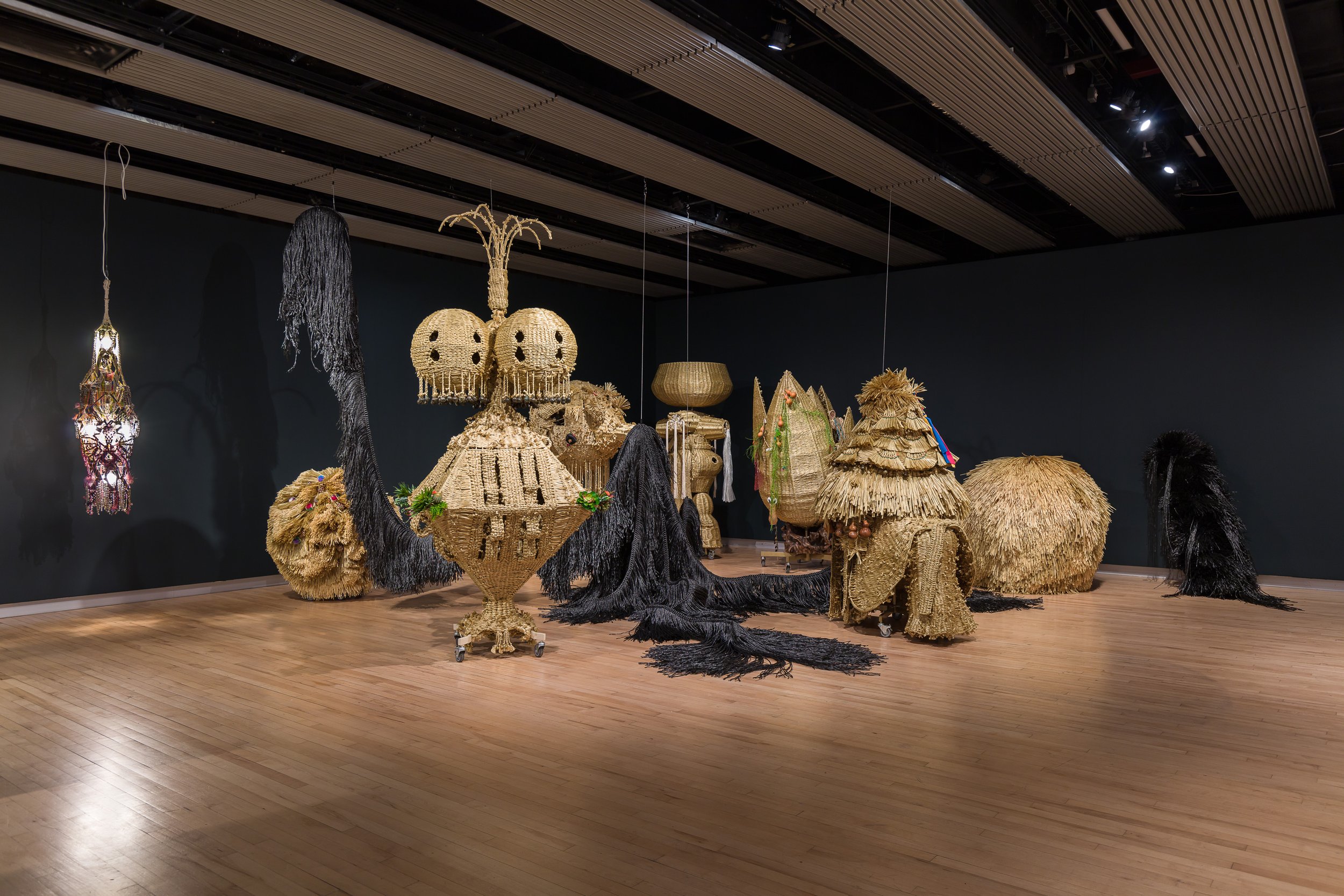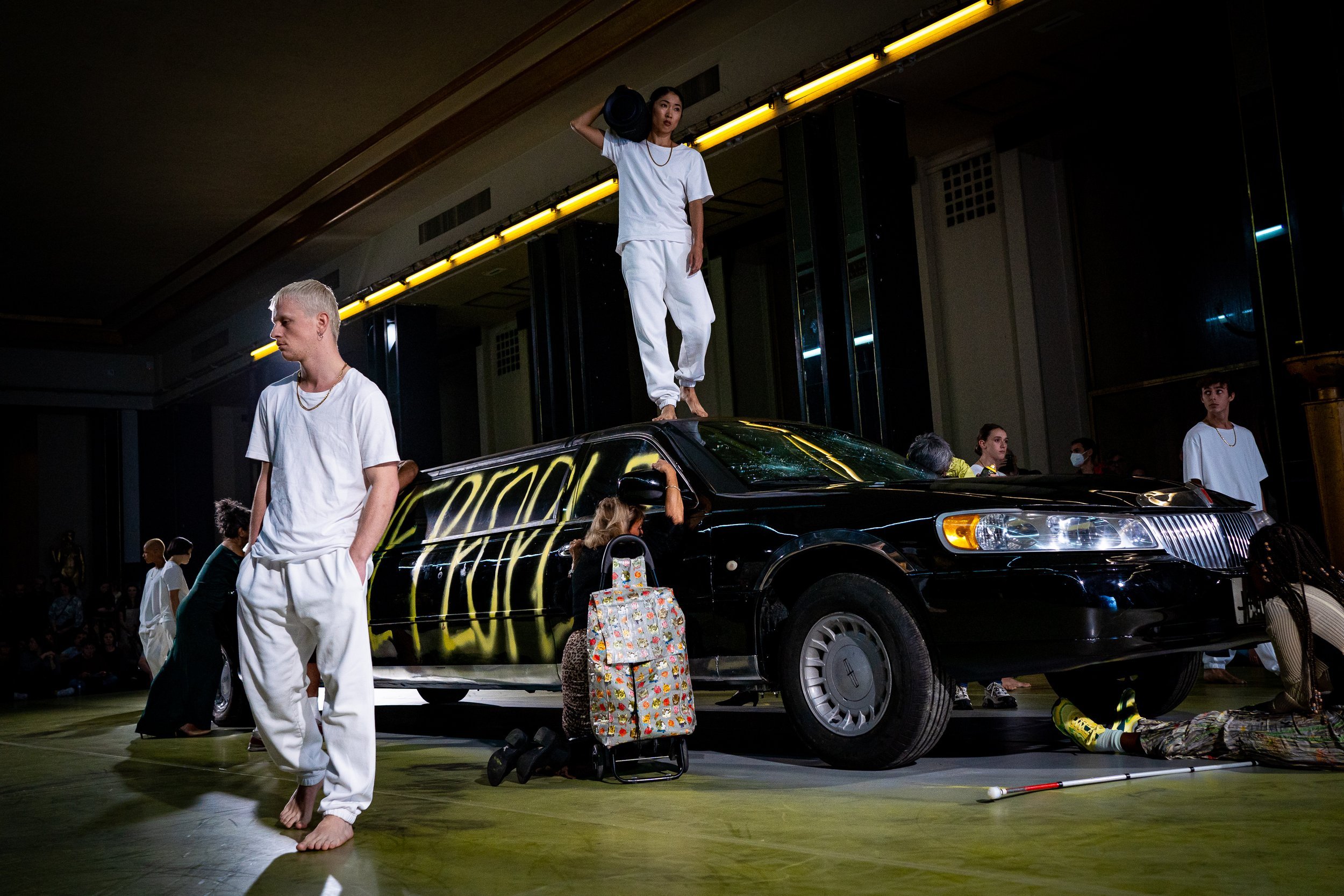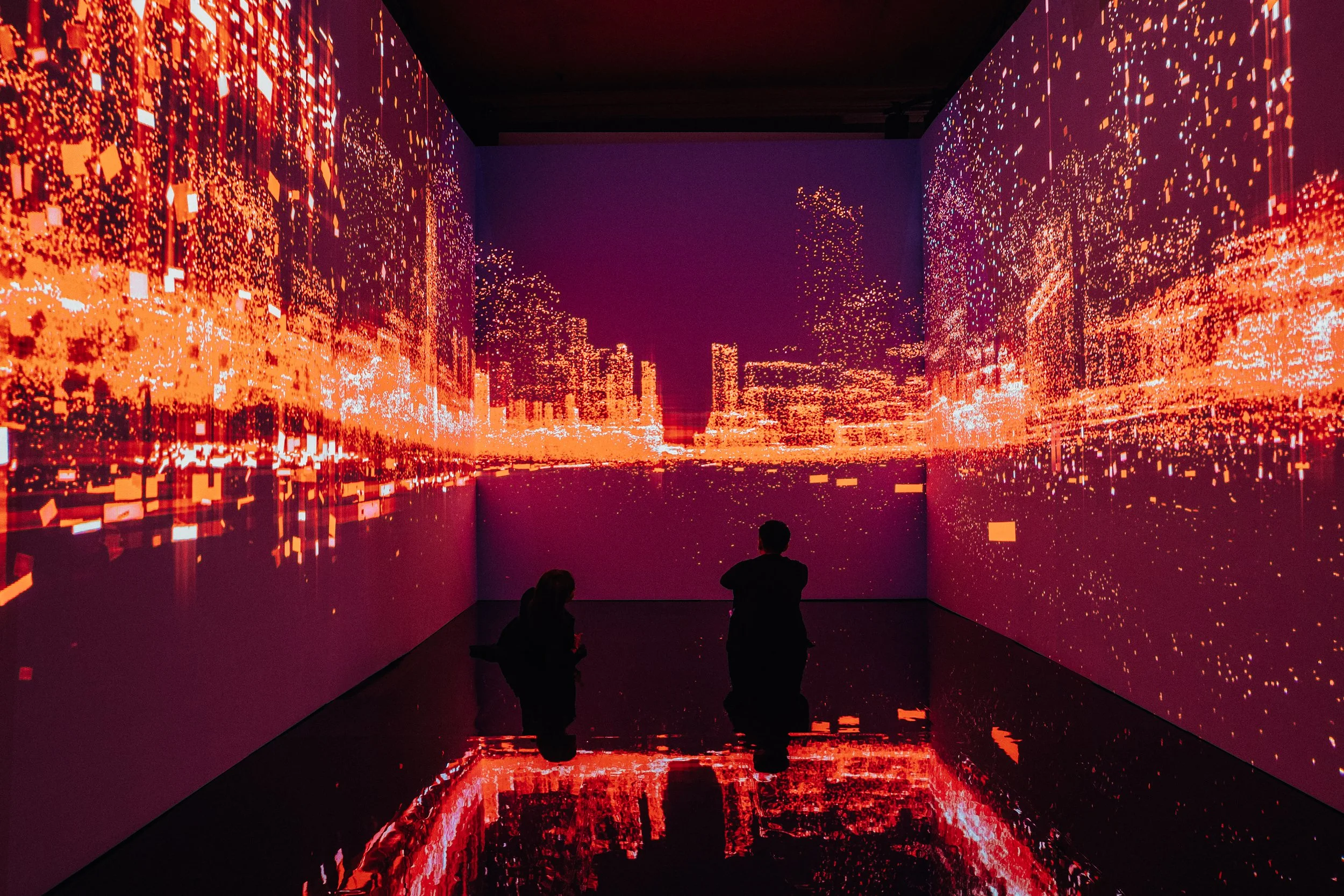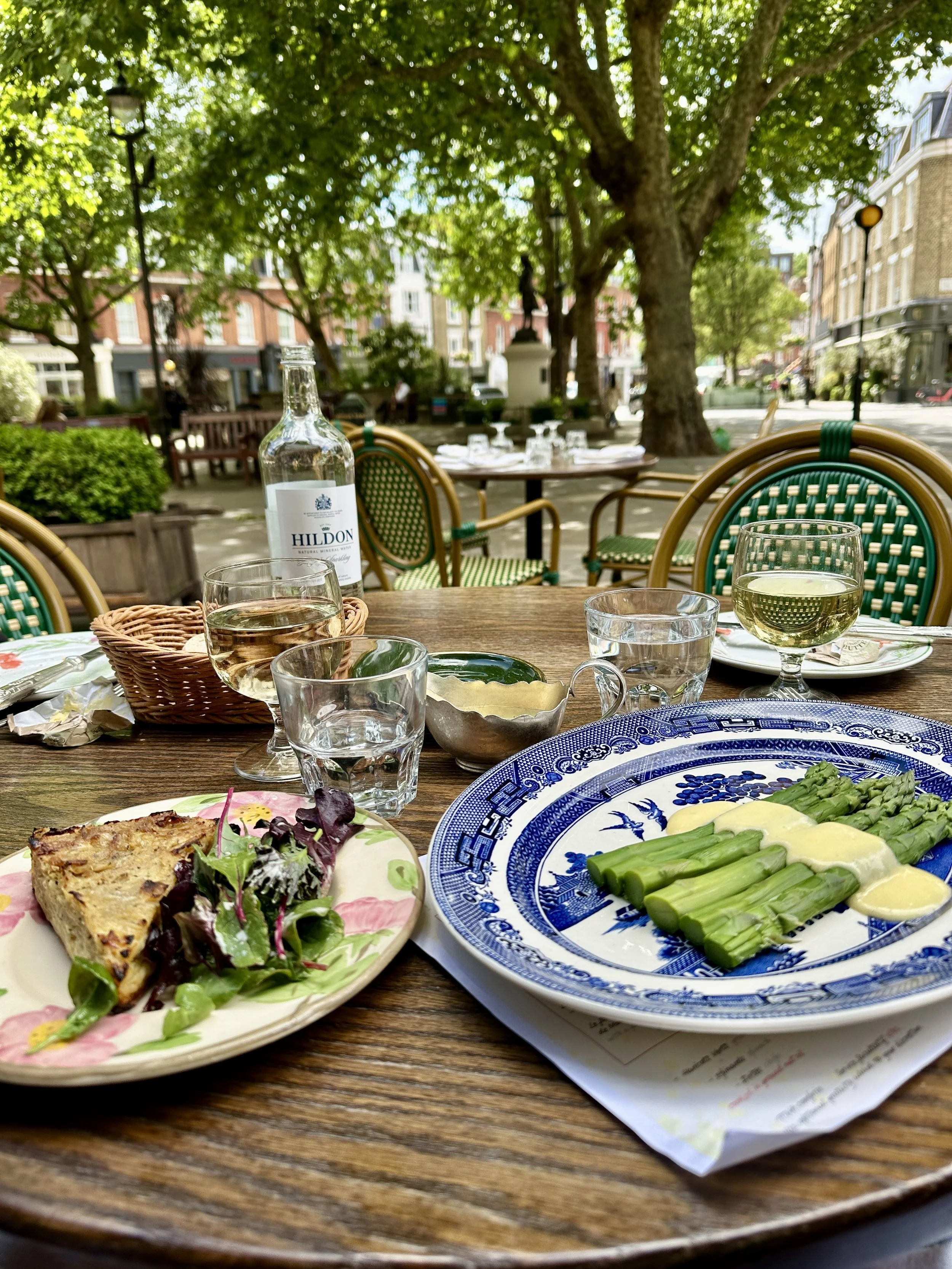Haegue Yang: Leap Year at the Hayward Gallery review
The Hayward Gallery created a hard act to follow this year after their highly successful and well-received major exhibition of Tavares Strachan. In continuing to champion artists from across the world, they have now launched their latest exhibition of the South Korean artist, Haegue Yang.
Leap Year explores Yang’s multifaceted, interdisciplinary, and inventive practice from the early 2000s to today, featuring key works from some of her most notable series, including Light Sculptures, Sonic Sculptures, The Intermediates, Dress Vehicles, Mesmerising Mesh, and the Venetian blind installations.
Installation view of Haegue Yang: Leap Year, 2024. Photo: Mark Blower. Courtesy the artist and the Hayward Gallery.
The exhibition begins when you enter a doorway with what resembles a beaded curtain, but is the newly commissioned piece Sonic Droplets in Gradation – Water Veil (2024), made of blue and silver stainless-steel bells which trigger sonic reverberations, signalling one’s arrival and acting as a physical gateway into an artistic world imagined by Yang.
The first space, “Social,” aims to illustrate Haegue’s observations of different aspects of society, beginning with image-based works from the early 2000s to more sensorial experiences.
Having never been to Korea, I found the images of “sitting tables” interesting. A series of traditional street furniture found outdoors in Korean neighbourhoods. These low tables have a height which equally meets the demands of a table and chair and one can comfortably sit on it. She explores their origins, social relevance, and both formal, functional, and situational features, and in searching for them, notices they are on the verge of disappearance unnoticed. I have seen similar versions of the sitting table throughout Asia as a place for neighbours and friends to gather to chat, play games, or have tea. Either way, it was nostalgic to see, bringing me fond memories of my childhood.
Installation view of Haegue Yang: Leap Year, 2024. Photo: Mark Blower. Courtesy the artist and the Hayward Gallery.
The next gallery focused on Yang’s effort to conceptualise and visualise movement. The multiple sculptures here are equipped with castor wheels and handlebars, ready to be activated. If you’re lucky with the timing of your visit, the sculptures are activated by trained facilitators on specific dates in what feels like a performance piece. An enjoyable moment, but it felt like a bit of an “Emperor with no clothes” moment. What are we doing here, and what does it all mean?
Growing up in Singapore, I was familiar and always fascinated by the intricacies of Chinese paper-cut work. Originally, people used paper cuts as sacrificial offerings to deities, ancestors, and deceased relatives. Later, people started to use them as decorative ornaments in their houses—on doors, windows, walls, ceilings, and lamps. Haegue investigated this practice in her Mesmerising Mesh works when she set about studying the practice during her time stuck in Seoul during the COVID-19 pandemic. She has created some beautiful works here, while giving attention to this folk tradition. The display approach at the exhibit has been one of “enshrinement,” inspired by the shamanistic home altars of the Hmong people from Southeast Asia by using wooden shrine-like frames around the collages.
Mesmerising Mesh shares a space with The Intermediates – Dancing in Woven Masks (2015–), featuring hybrid ‘creature-like’ sculptures made from artificial straw that draw from global weaving techniques. In 2014, Yang and her team learned straw weaving techniques from a Korean artisan, which led to a series of anthropomorphic sculptures, huddled together in a sculptural ensemble blending various motifs from traditional Korean cultural rituals. The Chinese bride silhouette was instantly recognisable to me, but seeking enlightenment, I needed to look at the exhibition labels to try and make sense of what we are looking at. It turns out it is a “Hairy Dragon Ball,” a “Basket Totem on Triple Leg,” “Sea Lotus,” and a “Lion Dance on One Leg.” The list of materials used were of earthly grounding matter like raffia, jute twine, abalone seashells, conch shells, knitting yarn, and gourds. While scratching my head about what it all means, I could appreciate the pleasing aesthetics.
Installation view of Haegue Yang: Leap Year, 2024. Photo: Mark Blower. Courtesy the artist and the Hayward Gallery.
In several pieces throughout the exhibition, Yang sees the potential in the ordinary—from laundry drying racks, all stacked and twisted and draped with lightbulbs, to collages using hardware store catalogues to create beautiful, slick contemporary prints, where only on closer inspection does one notice the ordinary items used (rolls of brown paper, electrical supplies, and saunas) to create the image. Then there is what seems a borderline obsession with Venetian blinds. Having never seen Venetian blinds used in installations before, I have now come across them a couple of times within one week: firstly at Sir Michael Craig-Martin’s retrospective at the Royal Academy and now here at the Hayward Gallery. Haegue is drawn to Venetian blinds for their obliqueness, their tilted slats’ semi-transparent quality, and their capacity to divide and configure a space and limit visibility yet allow certain senses to travel through.
The upstairs galleries heavily feature her works with Venetian blinds. Star-Crossed Rendezvous after Yun (2024) is related to Isang Yun, the late Korean composer and political dissident accused by South Korea of being a North Korean spy. She uses his music and lighting in the installation to represent the hardship of exile and separation, as well as the jubilation of being reunited. The installation is too nuanced for my liking and, even with the guidance of the exhibition labels, it feels like a stretch to see and absorb what Haegue is trying to communicate.
Installation view of Haegue Yang: Leap Year, 2024. Star-Crossed Rendezvous after Yun, 2024. Photo: Mark Blower. Courtesy the artist and the Hayward Gallery.
The main room feels like a huge installation and is unique in the way it assaults the senses as one travels through sound, moisture, heat, scent, video and, of course, more Venetian blinds! I found the different sensations to be an interesting sensory experience.
The exhibition Sadong 30 (2006) originally took place in an abandoned home in Incheon, once inhabited by Yang’s maternal grandmother, where she spent much of her childhood. Recollection of Sadong 30 revisits the exhibition of Sadong 30 by projecting the translated guestbook comments of those who originally attended the exhibit. Eighteen years later, she has reconstructed the journey visitors would have taken travelling to her 2006 exhibition, shown in a video format projected onto a Venetian blind screen.
The diversity and range of work on show here leave no doubt about her desire and drive to create and explore. While this exhibition is certainly visually stunning and the works are inventive and beautifully presented, it doesn’t quite live up to expectations. With most exhibitions of this size, one expects to be either moved emotionally or enlightened by the artist’s unique view of the world, or to leave with some food for thought. Sadly, this exhibition slightly misses the mark.
Date: 9 October 2024 — 5 January 2025. Location: Hayward Gallery, Southbank Centre, Belvedere Rd, London SE1 8XX. Price: from £19. Concessions available. Book now.
Review by Natascha Milsom







































